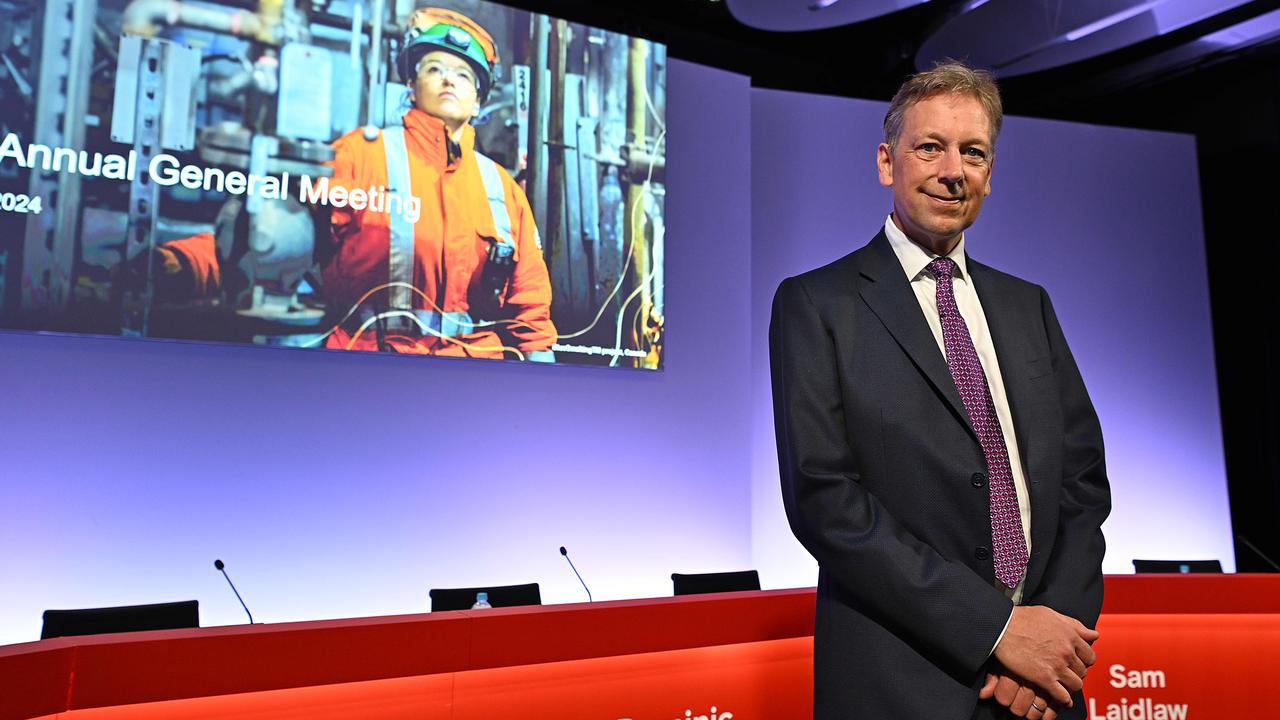Offshore investors look down under for value
Analysts predict Russia’s invasion of Ukraine may boost the Australian dollar and sharemarket despite the potential for further negative impacts on global risk assets.

Russia’s invasion of Ukraine may have significant positive implications for the Australian dollar and sharemarket despite the potential for further negative impacts on global risk assets
As the Ukraine war continues for a fifth week, Macquarie Equities increased the exposure of its model portfolio to resources and domestic companies, while arguing that the Australian dollar should be worth as much as US96c if commodity prices stay strong amid a US economic slowdown.
At the same time, UBS boosted its forecasts for a range of commodities including iron ore to reflect some of the impacts from the Ukraine war and upgraded Rio Tinto and Fortescue Metals.
Australian shares were restrained by weekend news of a phased lockdown of Shanghai due to a Covid outbreak. US futures slipped on supply-side inflation jitters, Treasury yields hit fresh three-year highs and oil prices dived on potential impacts on Asian demand from Shanghai lockdowns.
But Macquarie said there had been “strong interest” from foreign investors buying local shares to increase their allocations to Australia since Russia’s invasion of Ukraine.
“Our Australian equities team has seen this interest first hand,” said the broker’s Australian equity strategist, Matthew Brooks.
“For the first time in several years there is strong interest in Australian equities, mostly resources but also banks and real estate. Australia is a long way from the Russia-Ukraine war, but the event is having a bigger than expected impact on the sharemarket.”
First, the lift in commodity prices is a tailwind for the Australian economy as it stems from a supply shock which effectively transfers economic growth to Australia and other resource rich countries as a windfall gain. Commodity consuming economies like Europe face a growth headwind.
“An important implication of the commodity tailwind for Australian growth is that our domestic cycle has suddenly improved relative to the US,” Mr Brooks said.
At the same time, the Fed has signalled faster rate hikes to slow inflation, but they will also slow growth. Together with surging oil prices, US tightening increases the risk of a recession.
US equities tend to de-rate during periods of strong commodity prices, which adds to valuation headwinds for US stocks, but high commodity prices are not the only reason to favour Australia. Mr Brooks said sanctions against Russia and the subsequent fall in Russian equities had given investors a reason to focus more on geopolitical risks.
“These risks are likely greater in authoritarian regimes, and the other large authoritarian country is China,” he said.
“For investors concerned about investing in China, Australia is an alternative for Asia exposure, as it offers resources exposure within the backdrop of Australia’s strong and stable democratic institutions and governance.”
This “rotation to Australia” was likely a key factor behind the Australian dollar’s rise from around US72c to US75c. Mr Brooks said it “should” already be worth US96c based on a simple model using commodity prices and Australia-US interest rate differentials, though that’s not the official forecast.
“This currency kicker could be material (for offshore investors in Australia),” Mr Brooks said.
The Aussie dollar doesn’t normally rise in periods where the US cycle is slowing and possibly headed for a recession, but it can if commodity prices are strong.
“If we are at the start of a period that is like a commodity boom, many investors may remember that the (Aussie dollar) rose to a high of $US1.10 in July 2011.”
The war will also accelerate the deglobalisation process that started with the US-China trade war and the pandemic’s disruptions to supply chains.
A need to reduce reliance on Russian energy will also drive decarbonisation investment.
These trends are likely to support commodity prices and sustain inflation, favouring Australia.
Australian dollar strength was a headwind for non-resource companies with mostly overseas earnings, so Mr Brooks saw a need to lift exposure to domestic industrials to avoid the currency headwind. And banks are benefiting from surging bond yields.
Mr Brooks said the risk with cyclical resources stocks was earnings (not valuations) as the cycle slows and has a negative marginal impact on demand and commodity prices.
But at spot prices he forecast more than 50 per cent upside to FY23 earnings for the ASX 100 Resources index.
“When you couple this with the risk of PE compression for industrials, and cyclical industrials with risk of downgrades due to the higher dollar and inflation, there are multiple reasons to favour resources,” he said.
Meanwhile, UBS upgraded Rio and Fortescue to neutral and boosted its target prices as it raised its iron ore forecasts to $US135 a tonne for 2022 and $US105 for 2023.
“The disruption of iron ore and steel exports from Ukraine and Russia, combined with stronger-than-expected data from China in January/February with the prospect of further easing to achieve the National People’s Congress’s ambitious growth target, improves the risk/reward for the iron ore price over the next 12 months,” said UBS analyst Lachlan Shaw.




To join the conversation, please log in. Don't have an account? Register
Join the conversation, you are commenting as Logout